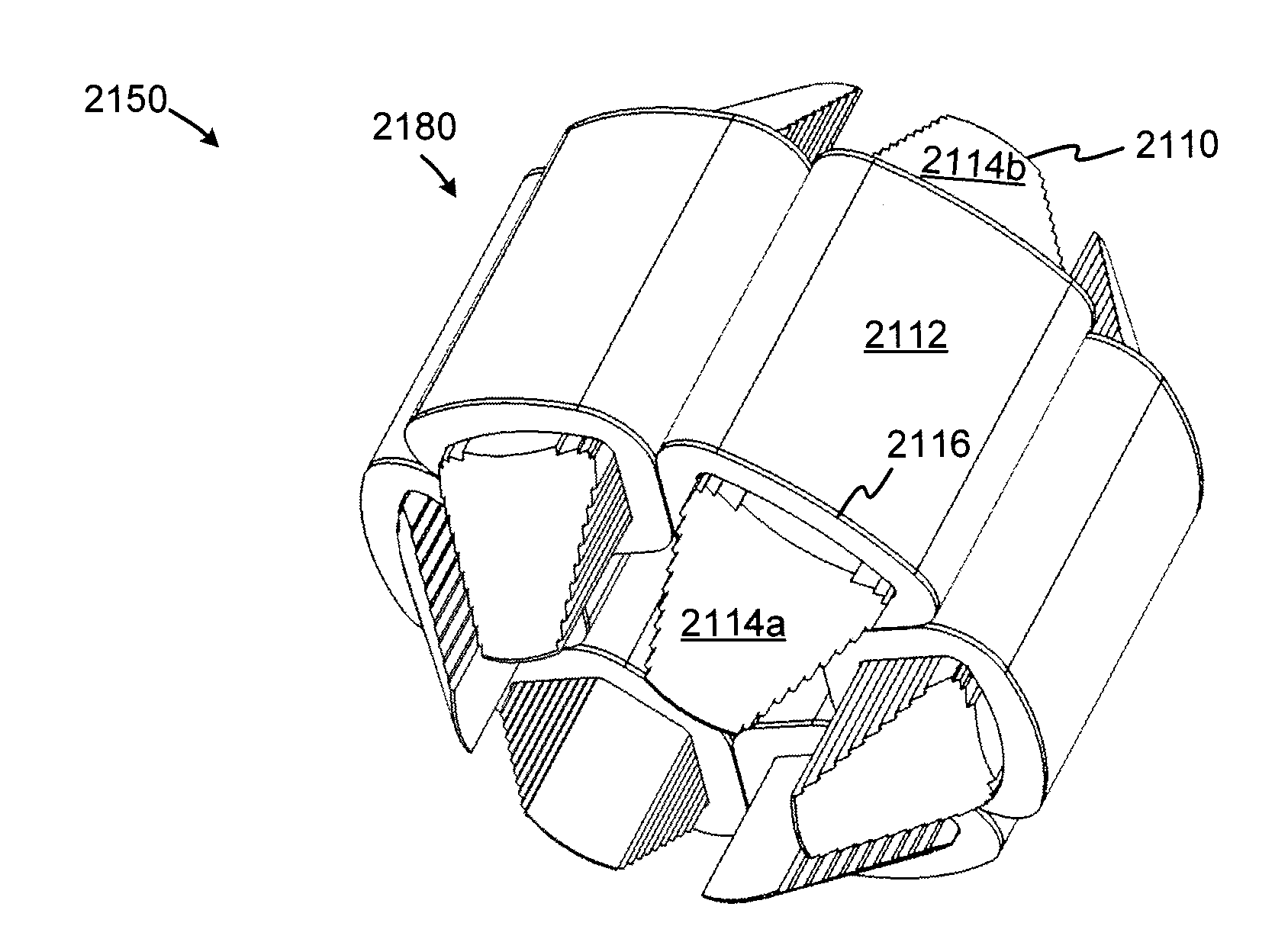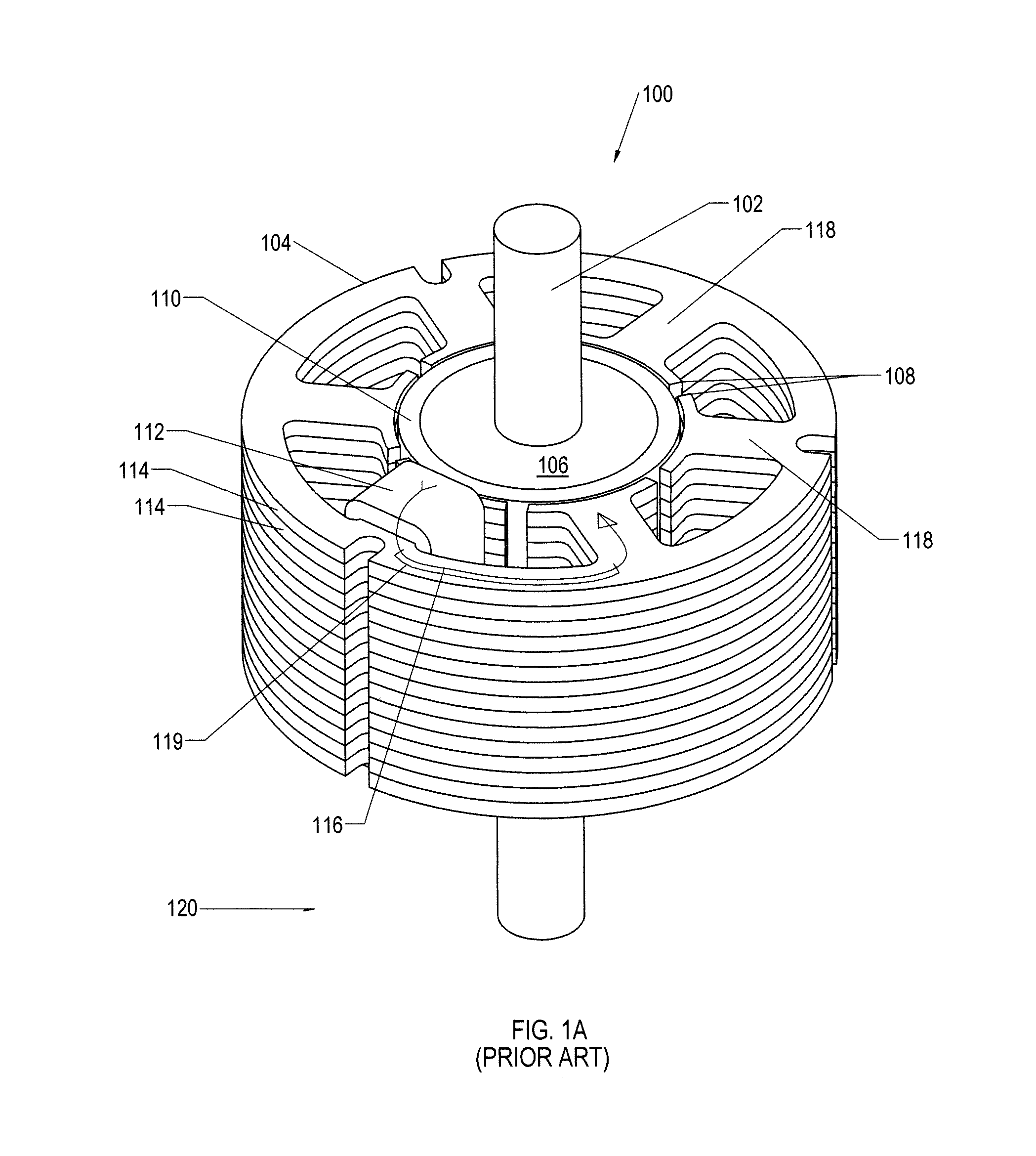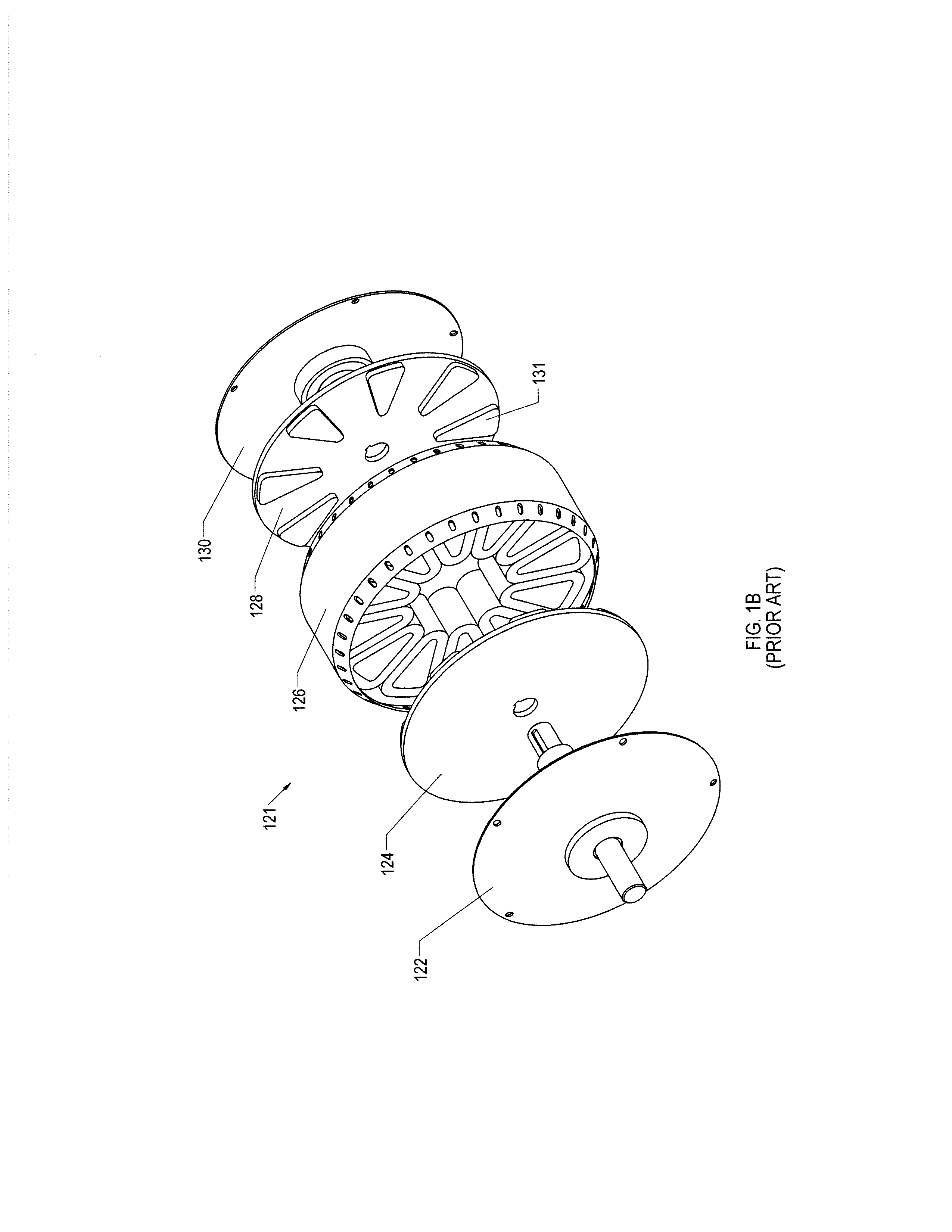Sculpted field pole members and methods of forming the same for electrodynamic machines
a technology of electrodynamic machines and pole members, which is applied in the direction of salient poles, magnetic circuits characterised by magnetic materials, and magnetic circuit shapes/forms/construction, etc., can solve the problems of increasing the form factor and material cost of motors to manufacture such motors, increasing the length of magnetic flux paths, and increasing torque and/or efficiency per unit size. , to achieve the effect of reducing manufacturing costs, reducing magnetic flux path lengths, and increasing torque and/or efficiency per uni
- Summary
- Abstract
- Description
- Claims
- Application Information
AI Technical Summary
Benefits of technology
Problems solved by technology
Method used
Image
Examples
Embodiment Construction
Definitions
[0073]The following definitions apply to some of the elements described with respect to some embodiments. These definitions may likewise be expanded upon herein.
[0074]As used herein, the term “air gap” refers, in at least one embodiment, to a space, or a gap, between a magnet surface and a confronting pole face. Examples of a magnet surface include any surface of magnetic material (e.g., a surface of permanent magnet), a surface of an internal permanent magnet (“IPM”), such as a magnetically permeable material through which flux passes (e.g., the flux being produced by a magnetic material), or any surface or surface portion of a “body that produces a magnetic field.” Such a space can be physically described as a volume bounded at least by the areas of the magnet surface and the pole face. An air gap functions to enable relative motion between a rotor and a stator, and to define a flux interaction region. Although an air gap is typically filled with air, it need not be so ...
PUM
 Login to View More
Login to View More Abstract
Description
Claims
Application Information
 Login to View More
Login to View More - R&D
- Intellectual Property
- Life Sciences
- Materials
- Tech Scout
- Unparalleled Data Quality
- Higher Quality Content
- 60% Fewer Hallucinations
Browse by: Latest US Patents, China's latest patents, Technical Efficacy Thesaurus, Application Domain, Technology Topic, Popular Technical Reports.
© 2025 PatSnap. All rights reserved.Legal|Privacy policy|Modern Slavery Act Transparency Statement|Sitemap|About US| Contact US: help@patsnap.com



